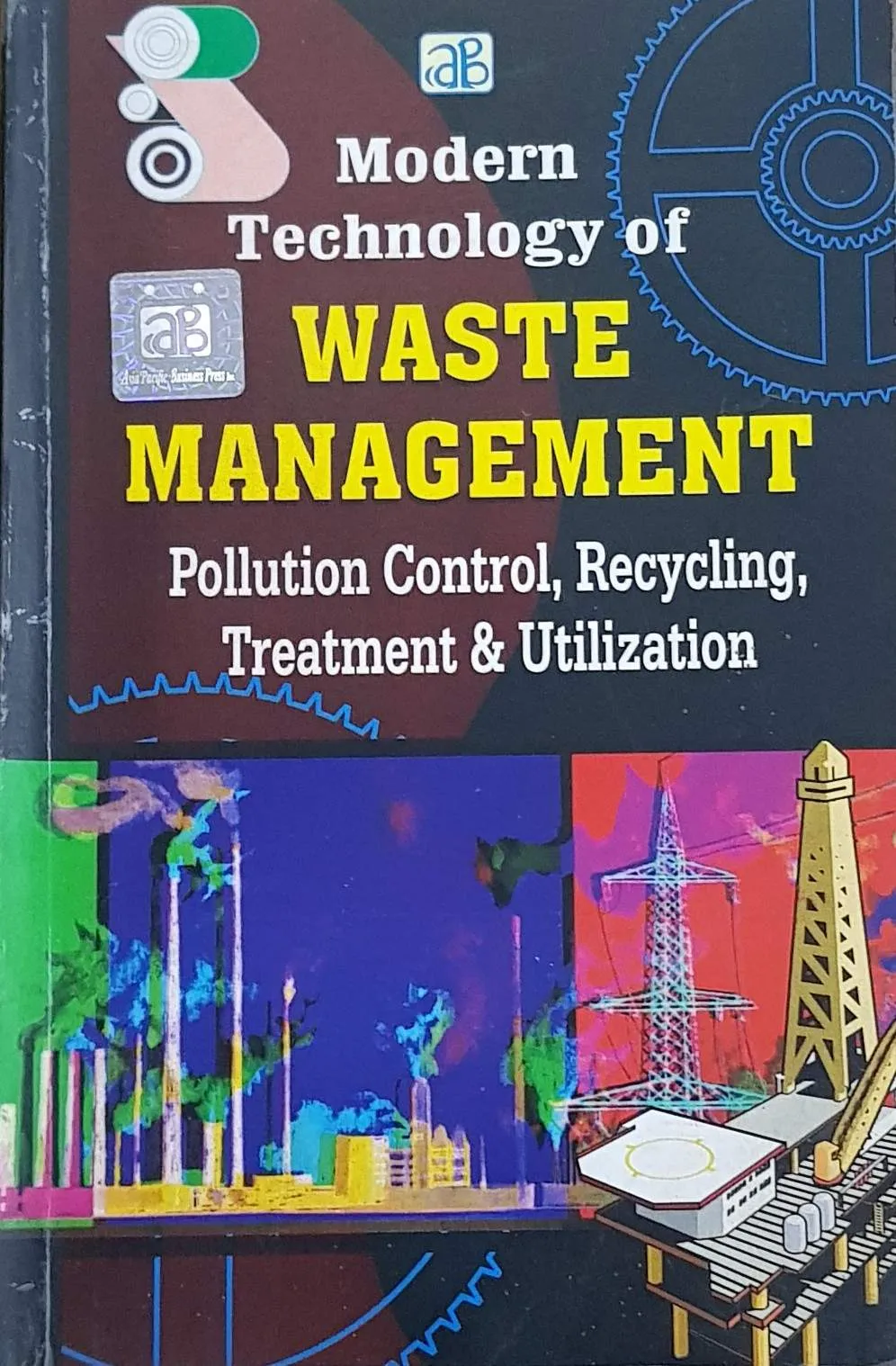Waste management is the collection, transport, processing or disposal, managing and monitoring of waste materials. The term usually relates to materials produced by human activity, and the process is generally undertaken to reduce their effect on health, the environment or aesthetics. Waste management is a distinct practice from resource recovery which focuses on delaying the rate of consumption of natural resources. The management of wastes treats all materials as a single class, whether solid, liquid, gaseous or radioactive substances, and tried to reduce the harmful environmental impacts of each through different methods. Rapid industrialization last few decades have led to the depletion of pollution of precious natural resources in India depletes and pollutes resources continuously. Further the rapid industrial developments have, led to the generation of huge quantities of hazardous wastes, which have further aggravated the environmental problems in the country by depleting and polluting natural resources. In fact, man today is caught in the vicious circle of increasing wants, declining resources and increasing waste being generated by the industries and municipalities is posing a problem of enormous dimensions. The domestic and industrial effluents are contributing in enhancing this problem. It might become the biggest problem if it is not dealt with immediately. Therefore, rational and sustainable utilization of natural resources and its protection from toxic releases is vital for sustainable socioeconomic development. Hazardous waste management is a new concept for most of the Asian countries including India. The utilization of resources and generation of waste is for beyond the limit that the biosphere was made to carry.
This book majorly deals with industrial waste, industrial waste water technology,
modern technologies for water pollution control, water recycle & product recovery air pollution control, environmental management system (EMS), surface active agents and contamination of water, physical methods for the treatment of organic acid bearing wastes, realities of waste cyanide treatment in India, biological treatment of aqueous wastes, plastics and generated wastes, alginate industry waste a source of biogas, acid charred waste as a resource material for highly active adsorbent.
We have made a sincere effort to bring out this book which helps in minimizing the problem. For the conservation of our environment and sustainable development, we have tried to bring about the solution. This book is a careful attempt in bringing together some selected articles from both entrepreneurs and specialist on all that is possible in the field of waste management.

Modern Technology of Waste Management: Pollution Control, Recycling, Treatment & Utilization
1. Industrial Waste
2. Industrial Waste Water Technology
3. Modrn Technologies for Water Pollution Control,
Water Recycle & Product Recovery
4. Air Pollution Control
5. Environmental Management System (EMS)
6. Abated Breath
7. Surface Active Agents and Contamination of Water
8. Physical Methods for the Treatment
of Organic Acid Bearing Wastes
9. Realities of Waste Cyanide Treatment in India
10. Biological Treatment of Aqueous Wastes
11. Plastics and Generated Wastes
12. Alginate Industry Waste- A Source of Biogas
13. Acid Charred Waste as a Resource Material for
Highly Active Adsorbent
14. Activated Carbon from Coke Fines
15. Calcium Chemicals from Waste shells
16. Cassia fistula (Amaltas) seed- A Potential source
of Commercial Gum*
17. Extraction and Analysis of Tomato Seed Oil
18. Fire-retardant Boards from Cotton Seed Hulls
19. Highly reactive silica from Rice husk
20. Insolation of Nicotine from Leaves of Nicotiana
tabacum by Complexation Method
21. Modification of jute stick by Cyanoethylation for
Industrial Applications
22. Trianthema portulacastrum Linn:
Natural Resource of Oxalic Acid
23. Commercial Viability of Water Hyacinth for the
Productions of Oxalic Acid
24. Particle Board from Jute Stick and Its Lamination -
A New Process
25. Extraction of Pectin from Apple
Waste Produced in Cider Manufacture
26. Pine-char Briquetting
27. Plastic Recycling
28. Plastic Recycling Product - Applications and
Future Potential
29. Potential Utilization of Water Spinach
(Ipomoea aquatica)
30. Recycling of Rubber
31. Economic Process for Preparation of Inositol and
its Derivatives for Corn Steep Liquor
32. Recovery of Unfloated Kainite from Kainite Floatation
residue from Marine Mixed Salts
33. Recycling of Sulphur Waste of a Sulphuric Acid Plant
for Making Sodium Thiosulphate Granules
34. Removal of Aflatoxin B1 from Liquids by Coconut Wastes
35. Small-scale Production of Starch from Damaged grains
36. Utility of Water Lettuce as a Source of Biogas
37. Utilization of Fly-ash as a Filler in Electrical Insulation
38. Utilization of Sandal Seed Oil
39. Utilization of Waste of Citrus Industries
40. Studies on Biomethanation of Water Hyacinth
41. Utilisation, Treatment and Disposal of Distillery Effluents
42. Utilisation of Agricultural Residues for Pulp,
Paper and Board
43 Mini Paper Plant from Waste Paper
44. Recycling of Waste Paper
45. Recycling of Waste Paper by Flotation
Deinking Technology
46. Leading Environment Consultants in U.S.A.
47. Leading Pollution Control Equipment Manufacturers
from United Kingdom
48. International Environmental Organisations
49. Central and State Pollution Control Boards in India
50. Pollution Control Equipment Manufacturers
51. Powers and Functions of the Pollution Control Boards
52. Standards for Cleaner and Greener Environment
Customer Reviews
No reviews yet. Be the first to write one!

